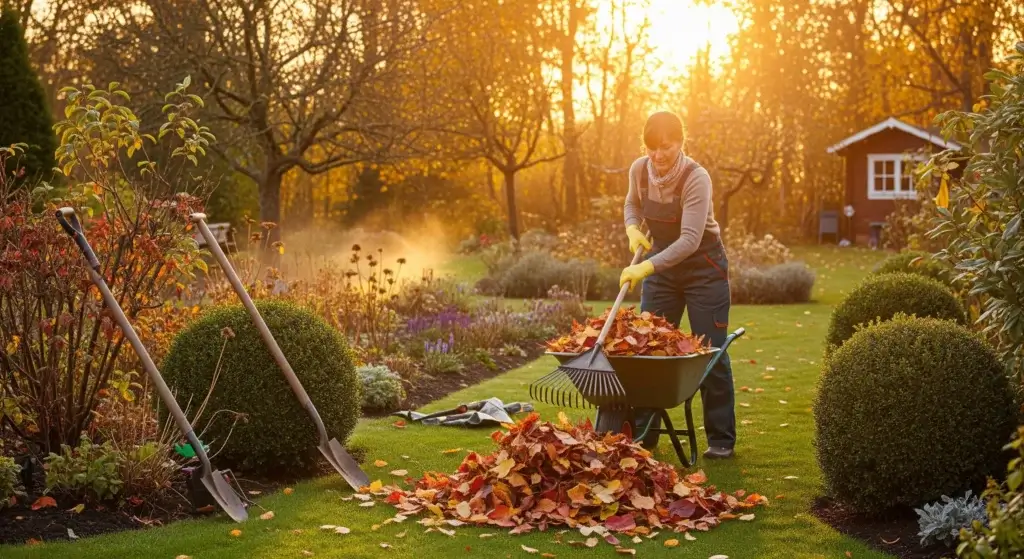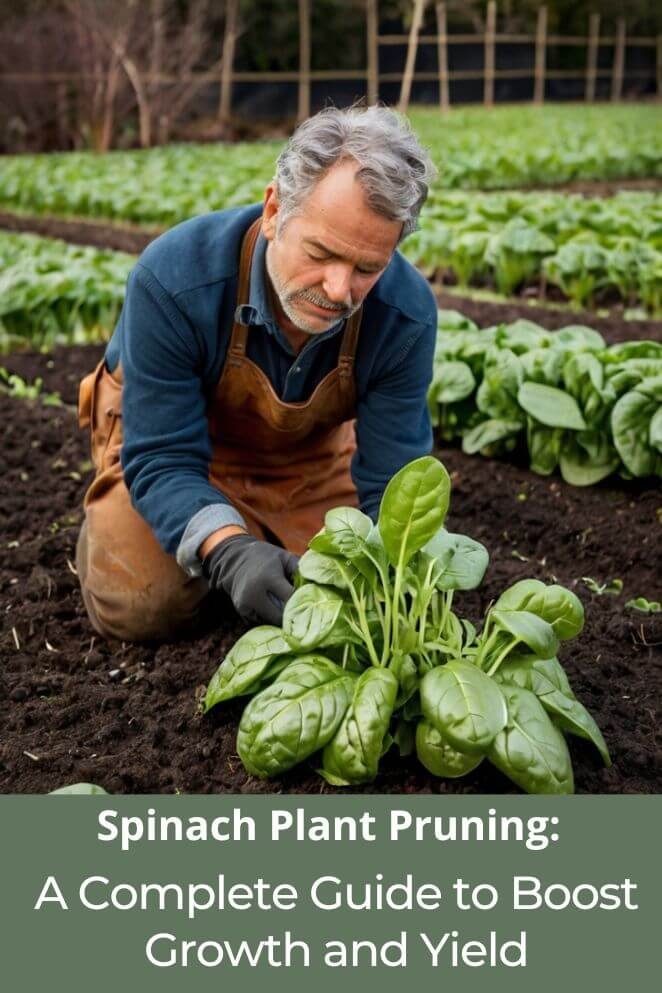
Spinach, a leafy green packed with essential nutrients, is a popular addition to gardens and farms worldwide.
While it’s relatively low-maintenance, proper pruning can significantly enhance its growth, health, and yield.
By learning the optimal timing and techniques, providing proper post-pruning care, and avoiding pruning mistakes, you can maximize your spinach harvest and enjoy the freshest, most flavorful leaves straight from your garden.
Benefits of Pruning Spinach Plants
Pruning spinach might not be the first thing that comes to mind, but it offers a range of benefits:
Promotes leafier growth
Pruning encourages your spinach plant to focus on producing new, vibrant leaves.
When you trim back old, damaged, or yellowing leaves, the plant redirects its energy toward new leaf production.
This results in bushier plants with more lush, green leaves, which is exactly what you want for a plentiful harvest.
Without pruning, the plant spends valuable resources trying to sustain older leaves, which often don’t contribute much to the overall health of the plant.
- Read also: Prevent Spinach from Bolting: Understanding Causes and Solutions
- Read also: Spinach Organic Fertilizers: Everything That Gardeners Should Know
Prevents disease
Old or damaged spinach leaves are a breeding ground for diseases and pests.
By pruning these leaves, you reduce the chances of fungal infections, such as downy mildew, which thrive in decaying plant material.
Removing these compromised parts of the plant keeps it clean and healthy, preventing the spread of disease.
Moreover, many pests are attracted to weakened or damaged leaves.
Improves airflow
Proper airflow between the leaves is crucial for the health of your spinach plant.
When leaves become overcrowded, moisture can accumulate on the surface, creating the perfect environment for mold and mildew to grow.
Pruning helps by thinning out the plant, allowing better air circulation.
Prolongs the harvest period
Regular pruning can extend your spinach harvest season.
By consistently trimming back older leaves, you prevent the plant from becoming stressed due to overcrowded or dying foliage.
This gives your spinach the ability to keep producing new leaves over time, allowing for multiple harvests throughout the growing season.
Supports overall plant health
Pruning is a simple but effective way to maintain the overall health of your spinach plant.
By removing diseased, damaged, or overcrowded leaves, you’re helping the plant use its resources more efficiently.
The energy that would have been wasted on old or weak leaves is redirected into producing strong, new growth.
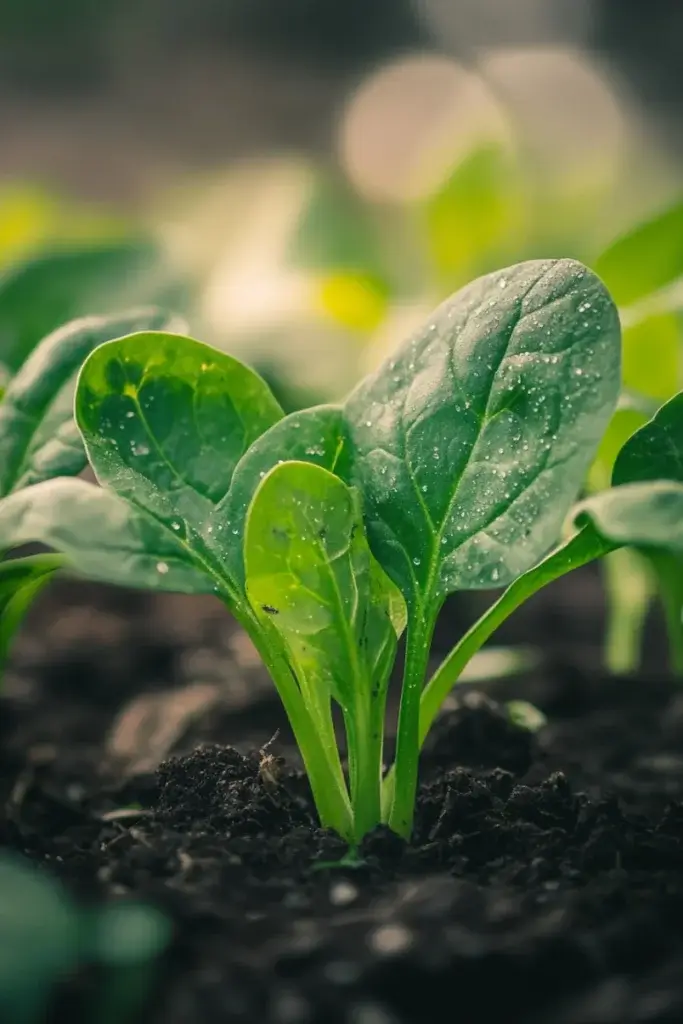
When to Prune Spinach Plants
Timing is everything when it comes to pruning spinach.
If done correctly, you’ll encourage continued growth, but if done too early or late, it can stunt the plant’s development.
- First pruning: The first pruning should take place when the plant has at least 4-6 true leaves. This means the plant is mature enough to handle trimming without causing harm.
- Spring pruning: The best time to prune spinach is in the spring when the plants are actively growing. Look for signs of new growth or a pause in leaf production, indicating that the plant is ready for a trim.
- Post-harvest pruning: After harvesting, it is beneficial to prune your spinach. This involves removing older leaves and stems to promote fresh growth and improve air circulation.
- End of season: Towards the end of the growing season, spinach may bolt (start flowering). Pruning can help slow down this process by focusing the plant’s energy on leaf production instead of flowering.
Tools to Prune Spinach
Using the right tools for pruning ensures that you don’t accidentally damage the plant. Here’s what you’ll need:
- Sharp scissors or pruners: A clean cut is essential for healthy plant recovery. Dull tools can tear leaves and cause damage.
- Garden gloves: While not mandatory, gloves can protect your hands from dirt and pests while working in the garden.
- Sanitizer: Always sanitize your pruning tools before and after use to prevent the spread of disease between plants.
How to Prune Spinach: Step by Step
Now that you know the benefits and have your tools ready, here’s a simple step-by-step guide on how to prune spinach:
Step 1: Start with healthy plants
Make sure your spinach plants are well-watered and healthy before you begin pruning.
Avoid pruning if the plant is stressed from heat or drought.
Step 2: Identify the older leaves
Look for older, larger leaves near the outer edges of the plant.
These are the ones you want to remove first.
Step 3: Cut near the base
Using sharp scissors or pruners, cut the older leaves close to the base of the plant, but be careful not to damage the stem.
Step 4: Remove yellowing or damaged leaves
Any leaves that appear yellow, damaged, or diseased should be removed immediately to prevent them from attracting pests or spreading disease.
Step 5: Continue pruning regularly
Prune about once a week, or whenever you notice older leaves crowding the plant.
This will keep your spinach plant producing fresh, tender leaves.
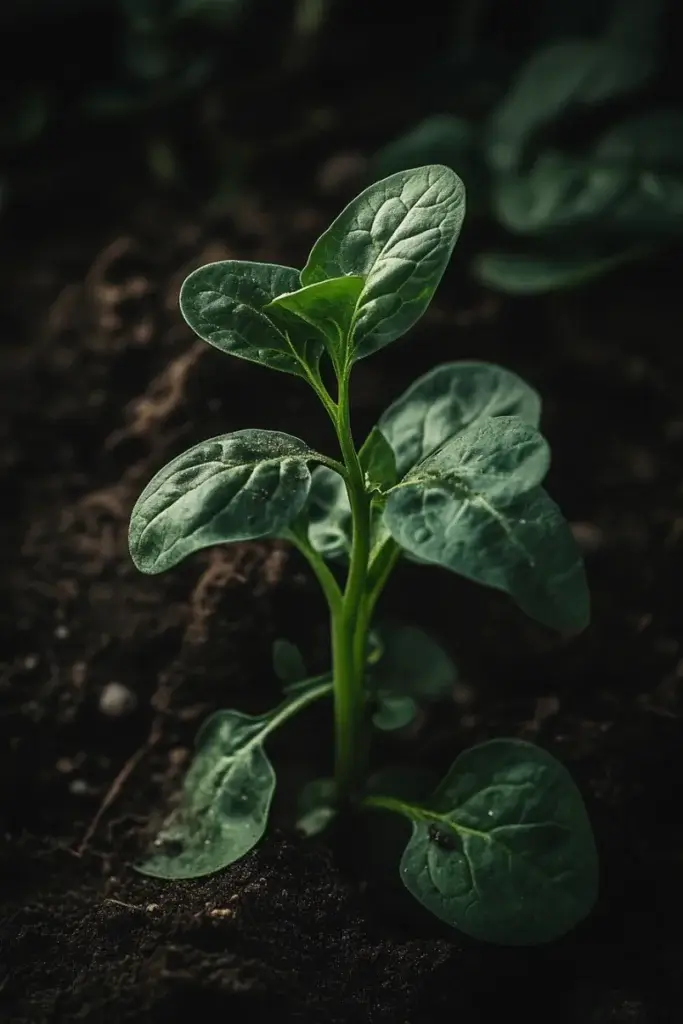
Care After Pruning
After pruning your spinach plant, there are several steps you should take to ensure optimal recovery and continued health:
- Clean up debris: Immediately clear any fallen leaves and debris from the area around the plant to prevent potential disease issues.
- Avoid over-watering: Refrain from watering your plant immediately after pruning. Allow it some time to adjust and recover from the shock caused by pruning. Check the soil moisture levels carefully to avoid over-watering, which can lead to root rot and other issues.
- Mulch around the base: Apply a layer of mulch around the plants to retain soil moisture and suppress weeds, helping to create a healthier environment for regrowth.
- Monitor for disease and pests: Regularly inspect the plant for signs of disease or pest infestation. Yellowed or damaged leaves may indicate issues that need addressing through pruning or treatment.
- Fertilize optionally: Consider providing additional nutrient support via organic fertilizers like compost or balanced fertilizers high in nitrogen to promote healthy leaf growth.
Common Pruning Mistakes
When pruning a spinach plant, several common mistakes can hinder its health and productivity.
Here are some pitfalls to avoid:
- Incorrect timing: Prune your spinach plant at the right times. Spring pruning encourages new growth and improves air circulation, while post-harvest pruning removes old or overgrown stems to promote fresh growth and better air circulation. Avoid pruning during blooming or extreme heat, as this adds unnecessary stress to the plant.
- Using dull tools: Use clean, sharp pruning shears or scissors for precise cuts. Dull blades can cause damage to the plant and introduce diseases. Always sanitize your tools before and after use to prevent disease spread.
- Cutting too much: Never remove more than one-third of the plant at a time. Cutting too much can shock the plant and reduce its ability to regenerate properly. Think of pruning as a haircut rather than shaving – aim for maintenance rather than drastic reduction.
- Poor cut placement: Make strategic cuts close to a leaf node to promote new growth. Avoid leaving stubs as they can rot and invite disease. Proper placement of cuts enhances plant health and prevents overcrowding, which reduces the risk of fungal growth.
- Insufficient cleanup: Clean up any fallen leaves and debris promptly after pruning to prevent potential disease issues. This maintains a healthy environment for the remaining parts of the plant.
- Inadequate recovery period: Give your plant time to recover from pruning without excessive watering. Holding off on watering allows the plant to adjust and minimize the risk of root rot and other complications.
- Ignoring pest-damaged leaves: Beyond regular pruning, address any yellowed or damaged leaves due to pests. Removing such affected parts can help control pest populations and maintain plant health.
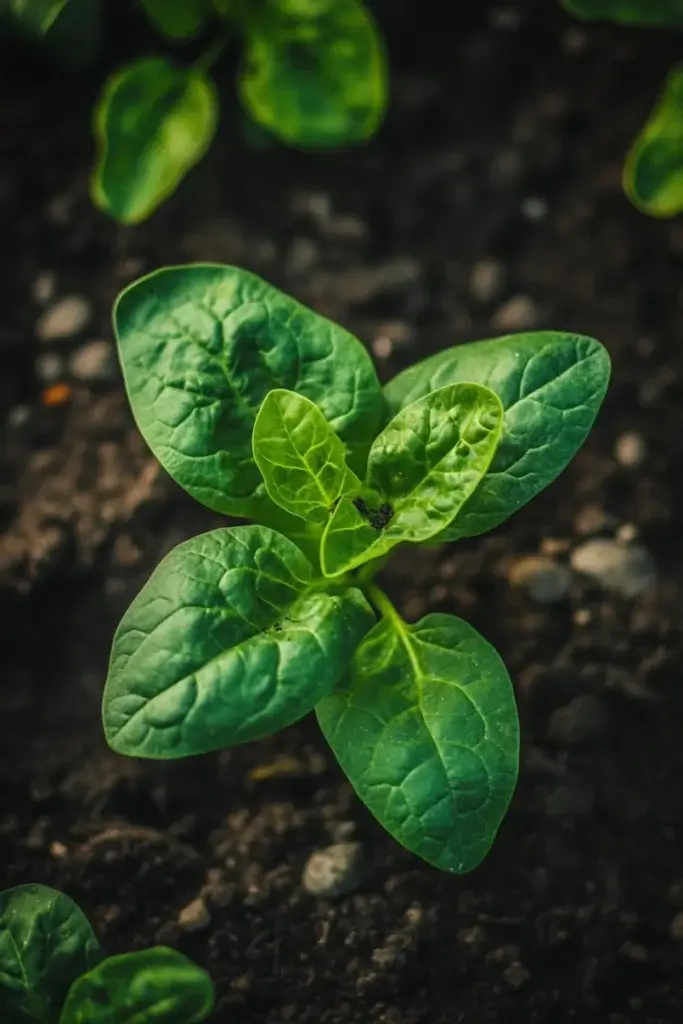
- Read also: Spinach Seed Germination: A Complete Guide for Thriving Greens
- Read also: The Ultimate Spinach Watering Schedule: Timing for Optimal Growth
Conclusion
Pruning spinach is an easy yet essential step to ensure you get the most out of your spinach plants.
With the right timing, tools, and technique, you can extend the harvest period, promote healthier leaves, and protect your plants from disease.
Just remember to be gentle, prune consistently, and take care of your plant after each trim.
FAQs
Early morning is the best time to prune, as the plant is hydrated, and it minimizes stress on the leaves.
While it’s not mandatory, weekly pruning helps keep the plant producing fresh leaves and prevents overcrowding.
It’s best to prune after watering, as hydrated plants recover faster from pruning.
While pruning won’t completely stop bolting, it can slow down the process by redirecting the plant’s energy into leaf production.

